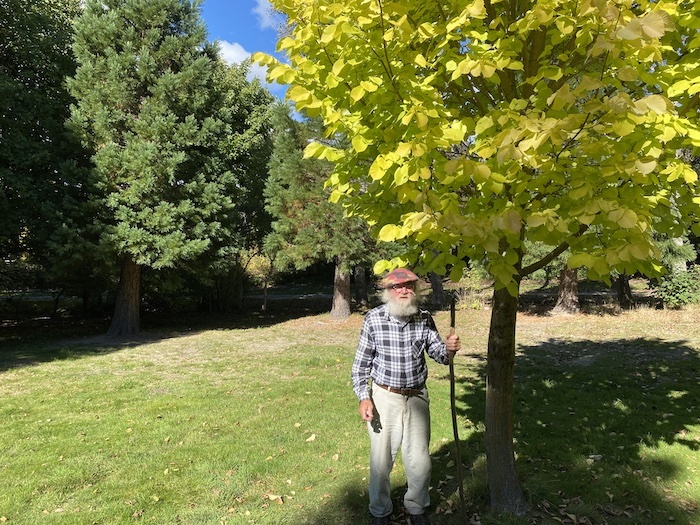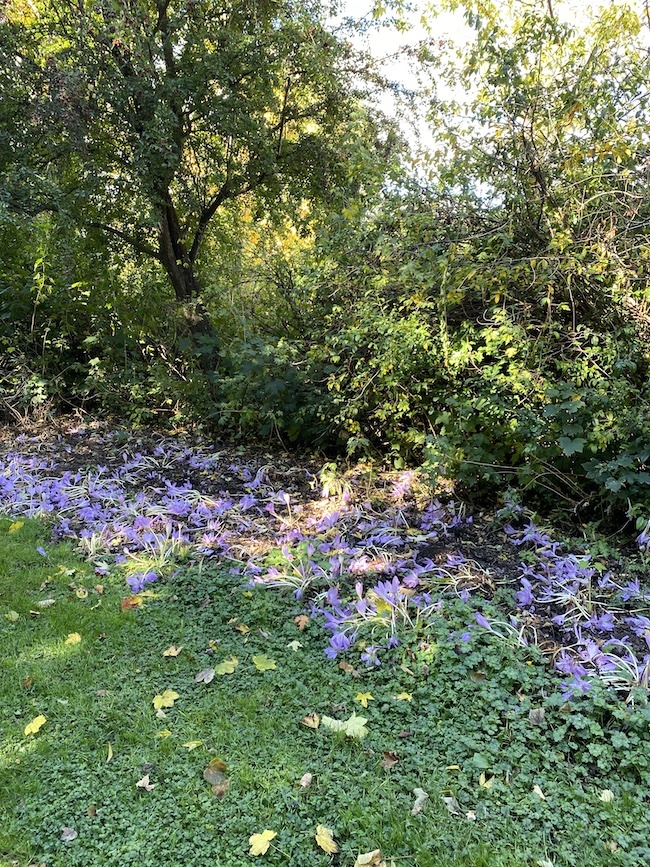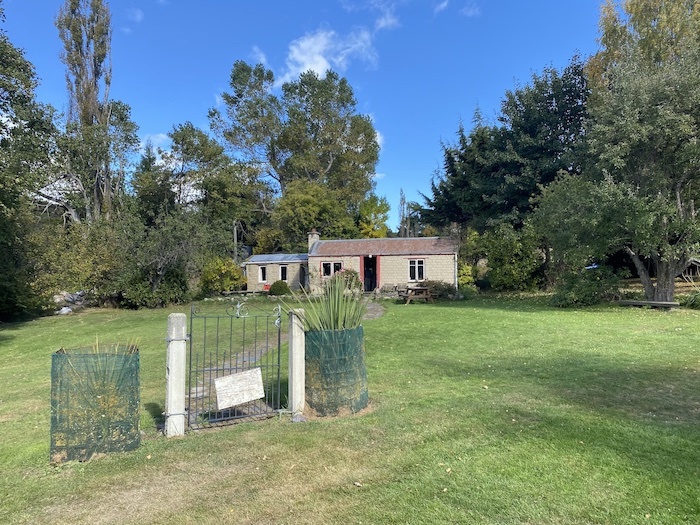Labour of love to create Cambrian wood
Anna Robb
11 April 2022, 6:30 PM
 Bob L de Berry (77) has planted his land create a forest, and it's free for anyone to visit. PHOTO: Anna Robb
Bob L de Berry (77) has planted his land create a forest, and it's free for anyone to visit. PHOTO: Anna Robb 42 years after moving to Cambrian one man is still working to leave a 32-acre forest legacy for future generations to enjoy.
Born Robert Berry, but now known as Bob L de Berry is one of Central Otago’s first proponents of a self-sufficient lifestyle.
He lives in a tiny mudbrick cottage, which itself around 120 years old, at the end of a winding country road before you reach St Bathans.
“This little valley here, it has something special about it. It’s a mile long, as crooked as a dogs hind leg, I consider myself a crooked man at the end of a crooked mile!
He is modest about what he has achieved on his land.
“Modesty is really important. The world is becoming full of self important people and that is what’s wrong in some ways,” Bob said.
After training as a teacher at Teacher’s College in Auckland, and working as a school teacher in Auckland, Thames and Queenstown Bob said teaching wasn’t for him.
He found St Bathans after visiting from Queenstown for a weekend escape. By the end of that weekend he’d bought a building from the publican (the Billiard Rooms) close to the Vulcan Hotel.
‘The council said we couldn’t live there as it was too small, and there wasn’t enough land with it [the building]. The publican tossed in a quarter acre section across the road for free so we could live there.
“That was how things were back then.
“My neighbour John Morgan had a farm from here [Cambrian] to the Hawkdun hills… I went out in my morry minor and helped to stack hay.
To show his thanks one day John, atop his tractor, came to drop off a bottle of beer, and the busy-ness of the traffic in St Bathans led to Bob commenting on the danger of the speeding cars.
The farmer invited Bob, together with his wife and young son to move to the cottage, away from the traffic on the main road in the village.
An arrangement was struck where Bob spent time helping on the farm in lieu of rent.
After a time he bought the cottage and some land from the farmer and the Crown agreed to freehold an additional 12 hectare lot, which originally had been subject to a mining lease.
“Everything was spontaneous… my first wife was an artist.
“We thought she would sell paintings and I could have a veggie garden and we could be one of the first to live off the land.
“So this place just ‘happened’… in between 1980-2000s we did self sufficiency, cows, bees, poultry.
“Then the kids grew up, wives got wise and left me with 10 litres of milk a day and 50kg of honey…
“I thought no, I’ll just plant trees…. There are no animals left. Only wild ducks that will come if I call them."
It was like a movie scene as Bob called for his ducks “duck, duck, duck” and the shiny beauties waddled over for a handful of seed.
“You can’t live in the country with nothing to enjoy it with,” Bob said.
At the turn of the millennium he threw a big party and an American friend gifted him $200 to buy some trees.
That led to Bob buying 40 Californian Redwood trees (Sequoia) that were about 50cm high.
“We planted them in a big zero to celebrate the turn of the millennium.
“The circle of twelve trees is known as the merry-go-round."

At the centre of the 22 year old circle of trees is a Golden Elm, to brighten the area up. PHOTO: Anna Robb
“I hope that in a hundred years time people who come to Cambrian will see the sequoia.
“It was just putting something in the planet for a fiver and it might be around in a thousand years.”
Bob said he gave everyone on the street a sequoia tree and planted them on the corners of his property.
“All of those trees have survived. Not one of them has failed.”
He acknowledged that planting deciduous North American and European trees might be out of favour with current thinking.
“I’ve always said plant what grows.”
There are also flaxes, toi tois and ferns on the property. Fantails and starlings are abundant and the noise of the birds is magnified in the quiet ambience of the forest.
Bob said all the seasons have their beauty in Cambrian.
The highlights are many including the snowdrops, daffodils, bluebells and autumn crocuses and then there is the hoar frost and fog freeze and also the autumn colours.

The last of the purple autumn crocuses were evident on Bob's property. PHOTO: Anna Robb
Bob said his biggest challenges are still to come. Without his regular labour force of woofers (workers on organic farms) due to the borders being shut he needs to keep the wrong sort of plants from taking over.
“There’s broom, blackberry, burdoch and the weeds. I’ve got to get the trees to such a height so nothing can touch them.”
He said he welcomes anyone to visit or lend a hand. If you’re lucky he’ll share a glass of his famous elderberry wine and you can ask him for a tale or two.
Email: [email protected]

Bob's cottage where there are gates but no fences and a warm welcome is assured. PHOTO: Anna Robb


